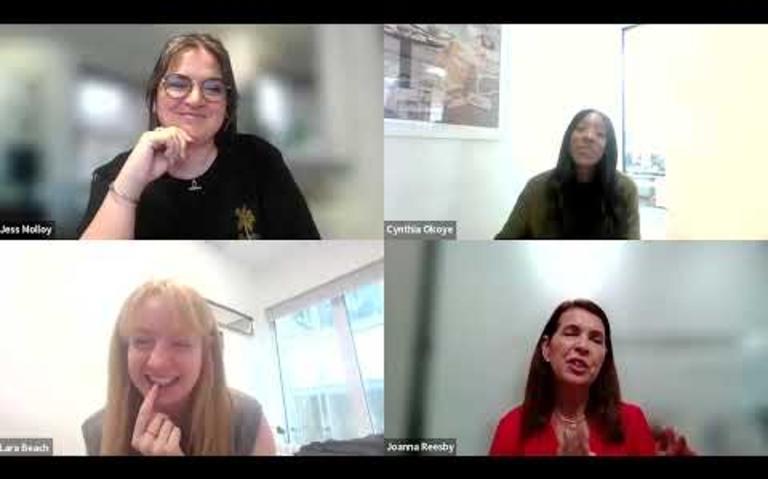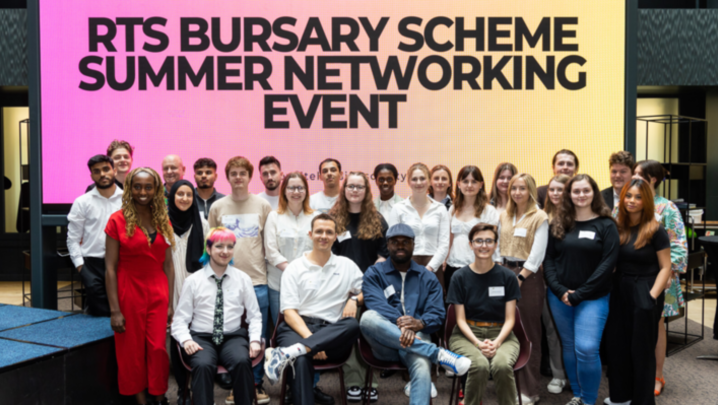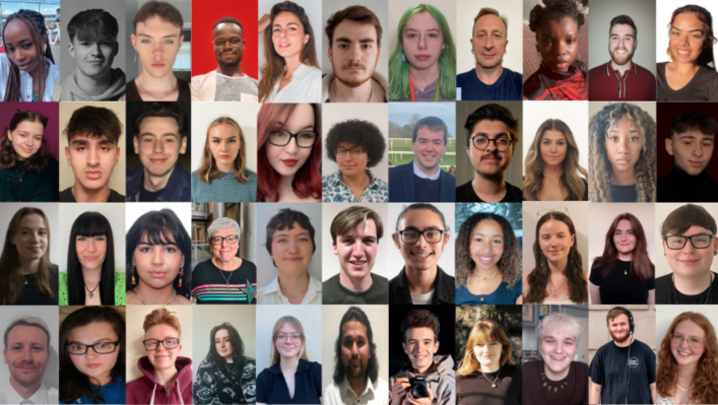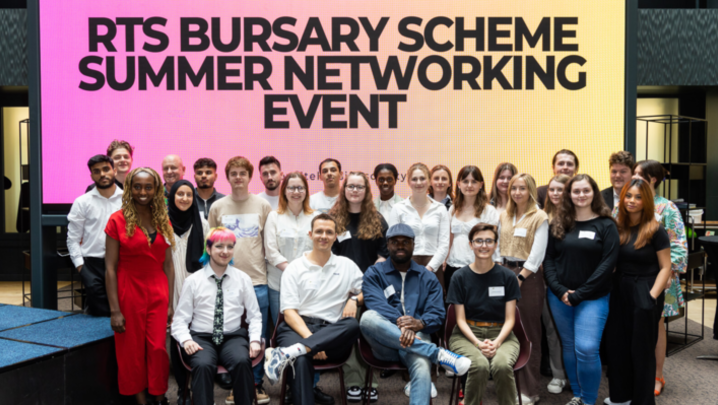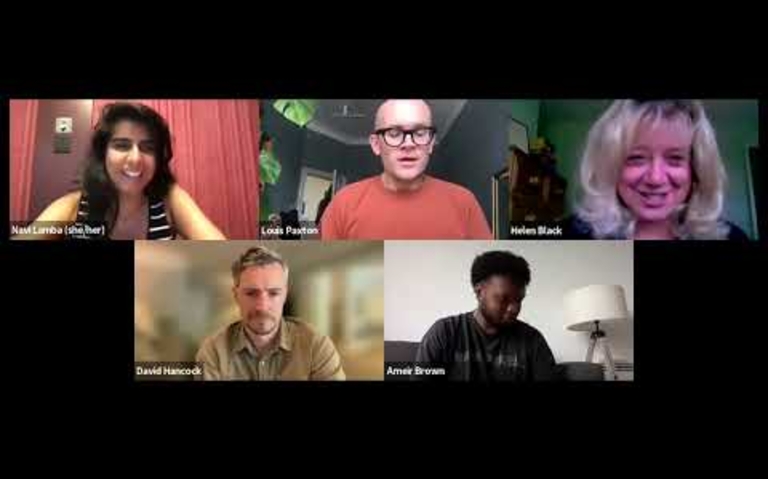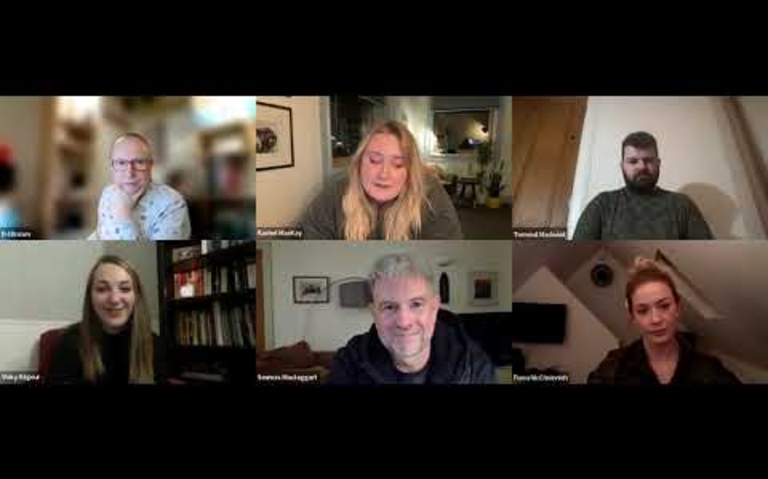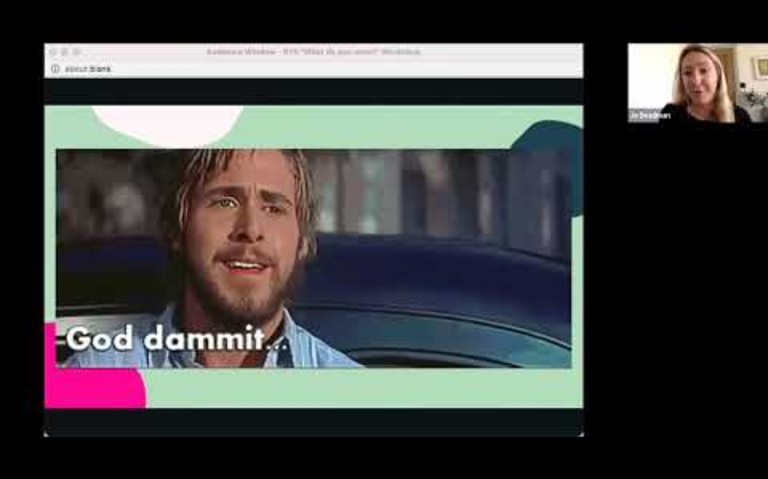Tim Palmer and Steve Robinson informed students about what it takes to work behind the lens
Television is at its core a visual medium and the cameraman exists at the very heart of it.
Tim Palmer, a cinematographer working predominantly in TV drama, and BAFTA winning documentary cameraman Steve Robinson turned the viewfinder on themselves to deliver an RTS craft skills camera masterclass.
The session was chaired by former Yorkshire Television high flier Helen Scott.
Palmer’s working life has been in commercial drama. Meanwhile Robinson brought more than 25 years in intimate, fly-on-the-wall documentaries to the table.
The duo talked about three defining examples of their work behind the lens.
Scott kicked off by asking the students how many shoot film. A forest of arms went up.
Despite building careers with very different subject matters, both experts started out fascinated by stills photography.
Robinson was inspired by hard-hitting photojournalism while Palmer plied his trade in editorial fashion and portrait stills.
"Those experiments in the bathroom at night time developing a piece of photographic paper and seeing the image come up in front of you were tremendously exciting," Robinson recalled.
Palmer said he "enjoyed the stylised version of photography and that naturally fed into a career in moving pictures."
Robinson stressed that composition is absolutely crucial to both stills photography and film. Palmer pointed how important lighting is for both image creation processes.
"If you're used to lighting people for stills that will help you an awful lot when it comes to lighting actors and moving pictures," he said.
The first visual effects-heavy scene from Doctor Who featured two separate set ups and numerous lighting challenges.
There were four sets: a spaceship control room, a corridor with an eyeball shaped window, a wood-panelled office and a cavernous Nazi chancery.
Palmer said everything came to life when lit for filming because of "the genius of set designer Michael Pickwoad."
He explained that big spaces demand big lamps placed far away. For the chancery scene Palmer used a mixture of strong lighting coming through each window to mimic ambient skylight and hard directional sunlight.
"That's one of the keys to lighting interiors realistically - not just to think about light coming through the windows but think about all the ambient lighting coming through from outside a window like skylight or ambient city lights," Palmer noted.
For Doctor Who there is a resident visual effects supervisor on every set up who tells Palmer what kind of shot they're looking for.
Scott introduced Robinson's first clip, Mum, Heroin and Me, portraying a young mother shooting up heroin in a public car park.
It was the antithesis of everything Doctor Who stands for. Scott confessed she had covered her eyes at one point while watching the clip.
Made by Granada Productions for Channel Four, the Jane Treays directed documentary intimately details drug addiction and its effect on one family.
Robinson filmed in Brighton over about 10 months in 2007. He used a long lens handheld camera. This enabled him to get up close and personal visually while maintaining an unobtrusive distance from his subjects.
The footage depicted the young woman's first time injecting the drug in a car park at night with her partner, also a drug taker.
“I liked the juxtaposition of the intimacy of what they were doing with that industrial environment," Robinson said.
His wider shots of fixed floor lighting and car park conduits mingled with close-up of dirty finger nails and injecting.
Robinson also filmed the couple at a methadone clinic, shot going in through a window and following them inside. "It would be easy to portray them as dirty and scuzzy but actually they were both fantastic. I wanted them to both come out with dignity."
He said it was crucial to build a relationship with the documentary's subjects, normally over several months, to avoid any suggestion of intrusion or exploitation.
"Something a bit more cheerful," Scott noted, as she introduced the clip from Critical. Palmer billed the scene from Sky's big budget medical drama, Critical, as the most technically demanding job he’s ever shot.
A 15-minute television conversation between two people driving separate cars at night from a car park through town to the countryside was Palmer's challenge.
He used rear projection because budget constraints and practicalities meant filming a stationary car on a trailer at night was ruled out.
The best known back projection company in the business run by Lester Dunton has a specially modified van with holes cut out of it where up to eight ARRI Alexa cameras can be fitted.
"He just drove the routes," Palmer said. He rigged lighting around and above the car on set.
As the car travels the light changes. This is achieved by Palmer having all the lights on separate dimmer switches.
Robinson won a BAFTA for his observational film, Amish: A Secret Life, made in an Amish community for the BBC.
While enjoying the permission of One Amish family to film them, the shoot was secret. The family knew they'd be ex-communicated from the church once the film became public knowledge.
At the end of the scene, a child called for Robinson and his director to be blessed while saying grace at the table before a meal.
Robinson said this indicated the warm relationship that developed between filmmakers and family.
Shot from indoors to outside, Robinson said it was a technique he liked to use. "I find windows and doorways very useful (framing) devices," he explained.
Palmer advises using whatever camera is right for the job. "The de facto drama camera now is the ARRI Alexa camera which works very well. I like it because it feels and behaves like the film cameras I grew up with."
For Robinson, the many different cameras available are a distraction. "I think you can get so bogged down in lens and cameras…It doesn't matter, as long as you see what's going on in front of you," he said.
For The Suspicions of Mister Whicher which was set in the grimy, moonlit 1860s Dickensian London streets, Palmer pushed the lowlight capabilities of the ARRI Alexa to its limits.
He tested it with Zeiss lenses and large apertures. This was to test the camera's ability to capture quality images in a gloomy setting.
"The difficulty on a scene like that was it was all steady cam and shooting with a wide open camera on super speeds. The hero on that was the focus puller," Palmer explained.
The final clip came from a documentary Robinson has spent over five years filming called On A Knife Edge. It is about a father and son from a Native American family.
They live on a reservation in South Dakota and the film looks at their community and its troubled relationship with mainstream U.S. society.
The clip finished with film of the tribe's annual march in February to the site of the massacre of Wounded Knee in 1870. There 100 tribal members were killed by the U.S. cavalry.
Robinson said that filming as an indie over five years didn't work financially. Other jobs were taken on as the filmmaking team – director, soundman and Robinson – scrambled for financing.
"It can useful sometimes to live and breathe the film," Robinson said ruefully.
Robinson reminded everyone of the need for a good story. "I don't know how familiar you are with visual grammar in the cutting room. Learn how you tell a story with pictures because that is what we both do."
Palmer said he looked forward to filming character-driven programming as filmmakers looked to do less plot-driven narratives.
The Craft Skills Camera Masterclass was an RTS afternoon event held at the BFI Southbank London Wednesday 11 November, 2015 chaired and produced by Helen Scott. By Stuart Kemp.


